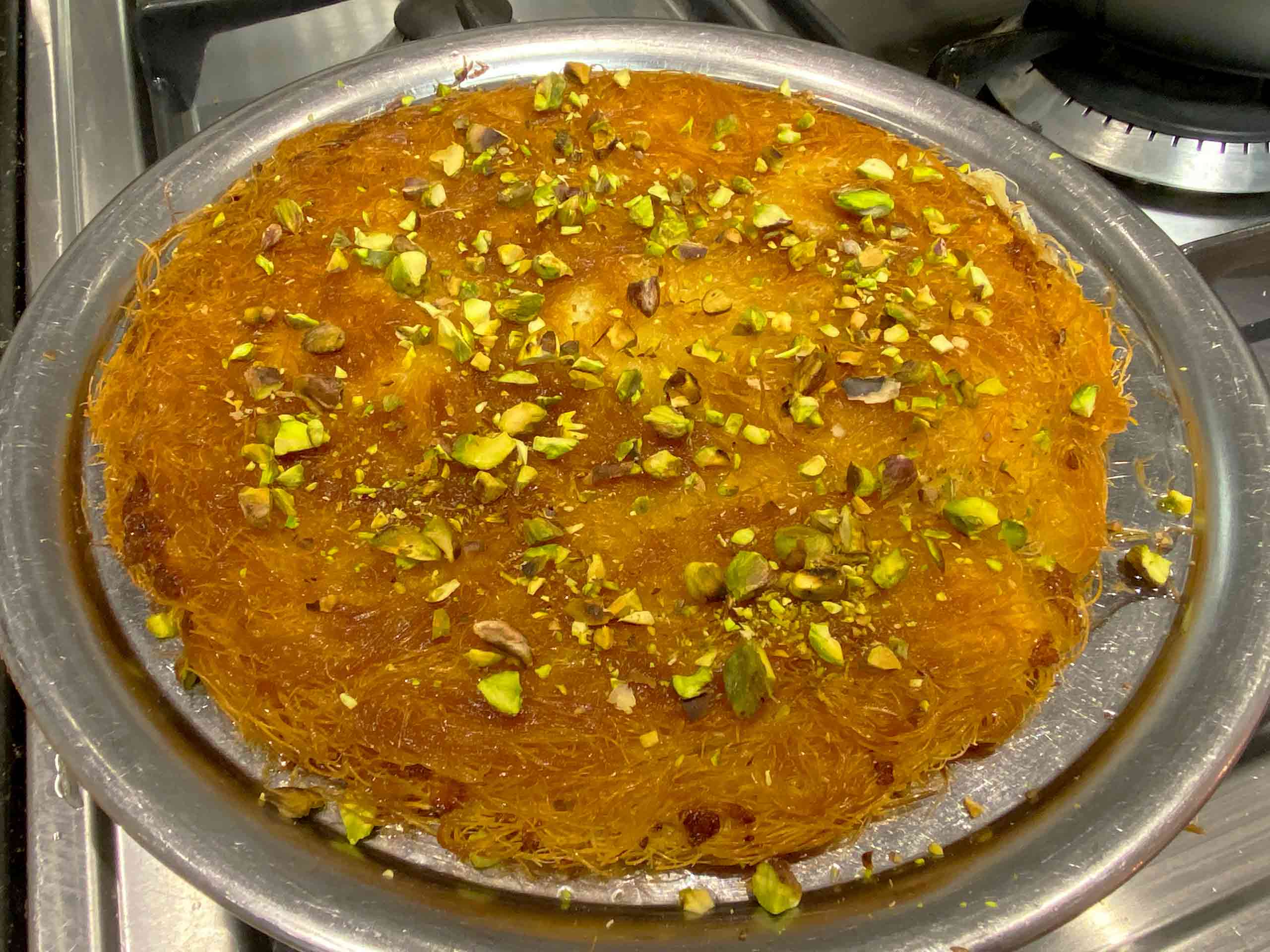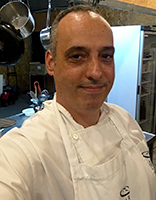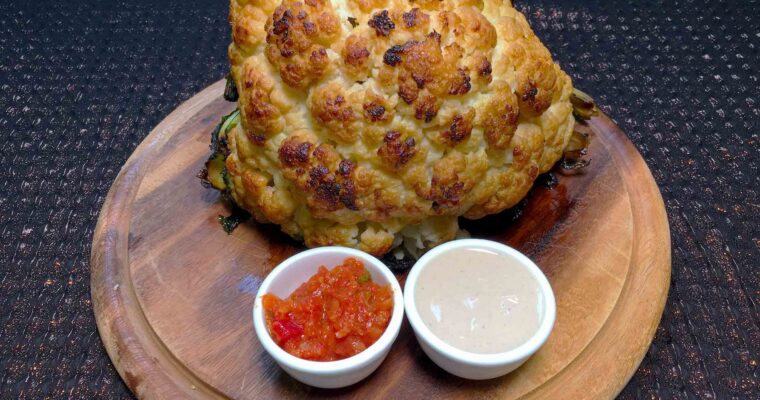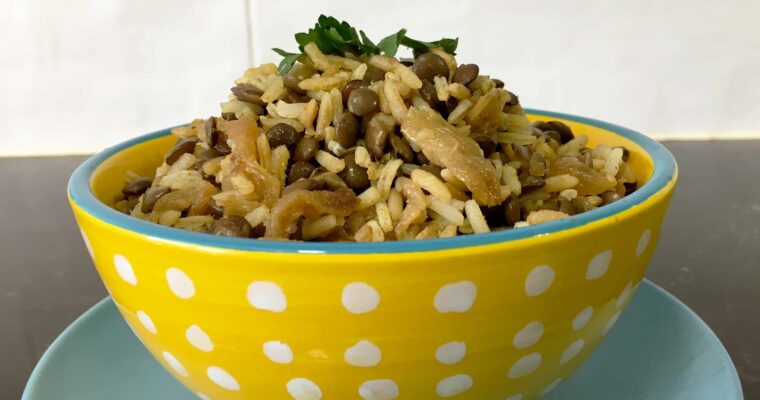TRADITIONAL KANAFEH RECIPE – AMAZING DESSERT FROM THE MIDDLE EAST
Kanafeh - Arabian Dessert
If you haven’t eaten kanafeh in your life, then you are in for a treat.
Knafeh is a dessert pastry consisting of hot cheese in between layers of crispy kadaif noodles in sweet rose syrup. Yummy.
Kanafeh is one of the most famous deserts that comes from the Arab kitchen.
It is also one of the dishes that have the most spelling variations to its name: Knafeh. Kunafa. Kanafe. Kunefe.
The Kanafeh is popular in the Arab world, particularly the Levant and Egypt, especially among Palestinians.
Also, variants are found in Turkey, Greece, and the Balkans.
Kanafeh - The hottest trend in the culinary scene
In recent years Kanafe has become one of the hottest trends in the middle east culinary scene.
Nowadays, Kanafeh shops are popping up like mushrooms after the rain.
The Kanafeh trend has evolved a lot because of Instagram, Facebook, and TikTok posts. Kanafe not only tastes great, but it is also very photogenic.
What is Kanafeh?
Kanafeh is a pastry made from two layers of Kadaif noodles (more commonly called angel hair) and a layer of sweet cheese placed between them.
The Kanafeh is traditionally cooked in a tray over an open fire until the buttery dough forms a crisp crust and the cheese has melted. The cooked Kanafeh is topped with rosewater or orange blossom syrup and crushed pistachios.
At home, you can either bake the kanafe or fry it in a pan.
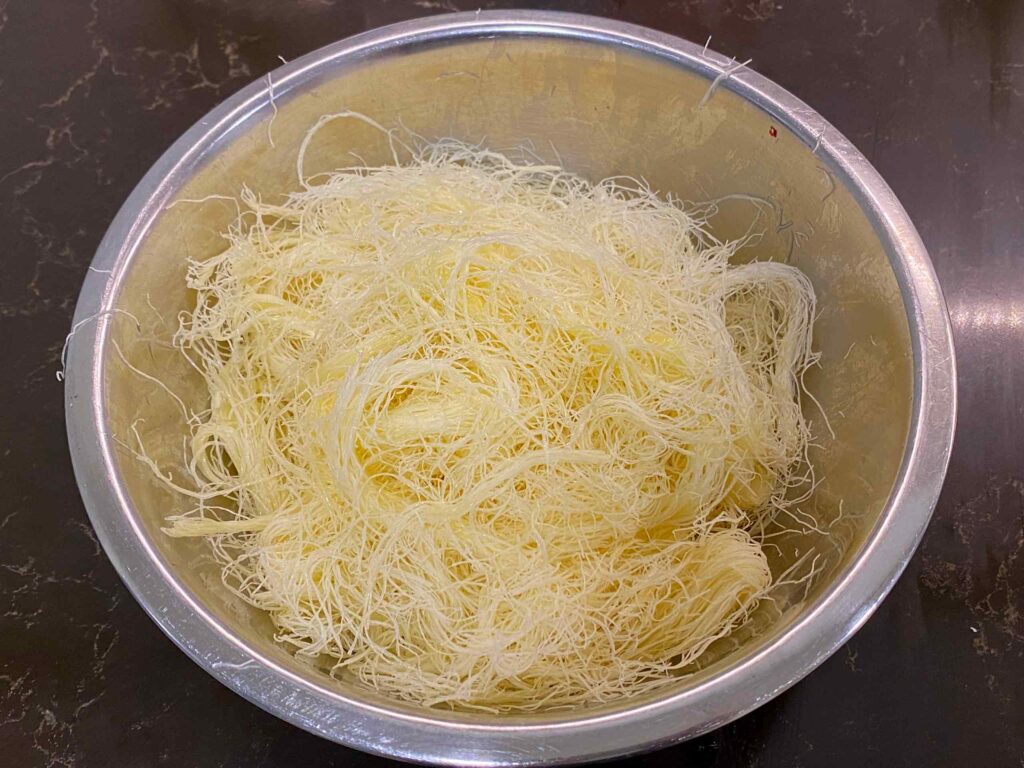
Kadaif noodles
The basic ingredient of the Kanafeh is the kadaif noodles.
Kadaïf noodles (or ktaïf, kadaifi, kadayif) is a phyllo dough cousin, consisting simply of water and wheat flour. They are thin noodles made by pouring dough through a sieve onto a hot, spinning surface to create the thin filaments that give the dessert its crunch.
You can buy kadaif noodles fresh or frozen.
Fresh kadaif noodles can be found in shops around Arab communities. The frozen version can be found mainly in supermarkets.
There is another version of the kadaif noodles that are sold dried. This version of the kadaif noodles is not recommended for the Kanafeh recipe.
The kadaif noodles tend to dry fast when exposed to air, lose their flexibility, and break easily.
When using them, keep them covered with cloth or plastic sheets.
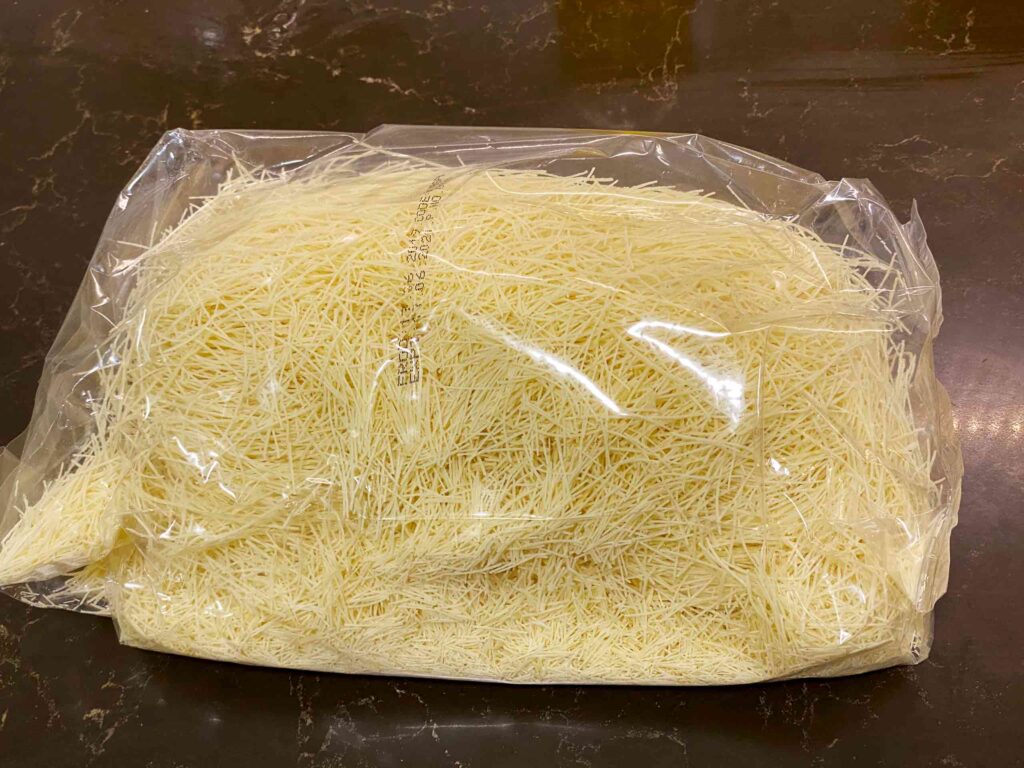
Jibneh
The original kanafeh recipe uses Jibneh, cheese in Arabic. Jibneh is a brined cheese – cheese that is matured in brine, and it is lightly salted.
To use the cheese in the kanafeh, you need to prepare it by soaking it in sweet water overnight and replacing it a few times. This process will lower the saltiness of the cheese.
The jibneh is usually made from goat milk, but you can also find jibneh made from cow or sheep milk.
The most famous jibneh are called Nabulsi and Akkawi, these cheeses are chewy and a little salty, so it strikes a nice balance between the saltiness and the sweet sugar syrup. But they are tough to find in many countries.
There is a special unsalted version of the jibneh called unsalted Brinza cheese with 20% fat. It is perfect for the kanafeh. If you can find it, then you are in luck. Just shred it, and you are ready to go.
If you can’t find the jibneh, don’t worry. You can substitute it with shredded mozzarella cheese. Just keep in mind to heat your slice and eat when warm as that’s when it tastes the best.

Samna - ghee - clarified butter
When making kanafeh, we use samna. Samna, also known as ghee, is another name for clarified butter.
Clarified butter is butterfat that has been cleared from all the milk protein and water to create a more stable cooking fat with a higher smoking point.
A higher smoking point allows us to use the butter at higher temperatures, without the burning and smoking effect that the unclarified butter has.
Samna or Ghee can be found in almost every local store.
Making Samna at home
If you can’t find samna or ghee anywhere, don’t worry. You can easily make samna at home. It is simple and much cheaper.
In a small saucepan, heat the butter over medium-high heat.
When the butter starts to boil, the milk proteins will become foamy.
Lower heat to medium and continue to boil gently; the milk proteins will start to break apart.
As the butter gently boils, the milk proteins will eventually sink to the bottom of the saucepan, and the boiling will begin to calm and then cease. Adjust heat as needed to continue boiling off the water without scorching the milk solids.
Once boiling has stopped, pour the butter through a cheesecloth-lined strainer or through a coffee filter into a heatproof container to remove browned milk solids.
Let cool, then transfer to a sealed container and refrigerate until ready to use. You can keep clarified butter for at least 6 months in the refrigerator.
Rose syrup - rose flavored simple syrup
The final touch to the kanafeh comes from the rose syrup. The syrup is a simple syrup with added rose leaves extract.
In some versions of the kanafeh, it is served with orange blossom syrup instead of rose syrup.
Orange colored kanafeh
The Arabs use artificial orange coloring to color the kanafeh. I think that the natural color of the kanafeh is much more appealing and healthier.
Traditional Kanafeh Recipe - Amazing dessert from the Middle East
Traditional Kanafeh Recipe - Amazing dessert from the Middle East
Ingredients
For the kanafeh:
- 500 grams Kadaif noodles fresh or frozen (thawed).
- 300 ml Samna or Ghee.
- 300 gram Shredded Jibneh (Nabulsi, Akkawi, or Brinza). If you can't find any, use Mozzarella instead. If you're using jibneh and it is salty, soak it overnight in water. Replace the water a few times.
- 100 grams Unsalted raw pistachios.
For the rose syrup:
- 1½ cup Sugar.
- 1½ cup water.
- 20 drops Rose water.
Instructions
Making the rose syrup:
-
You can make the rose syrup a few days in advance. Heat it before serving. This amount will be enough for 2 -3 kanafeh.
-
Place the sugar and the water in a small pot. Bring to the boil over medium heat, occasionally stirring until all the sugar dissolves.
-
Add the rose water and stir well. Lower the heat to simmer and cook for another 10 minutes.
-
Remove from heat and move into a jug so you can pour the syrup easily. If you are not using the syrup, immediately let it cool completely and store it in a jar in the refrigerator.
Roasting the pistachio:
-
You can roast the pistachio in advance a few hours before you prepper the dish. Please keep them in an airtight container.
-
Roast the pistachios on a dry pan (do not oil the pan) over medium-high heat for 3 - 4 minutes while constantly stirring and tossing them. Be careful not to burn them.
-
Remove the pistachio from the pan and let them cool completely.
-
Chop the pistachio roughly and store it in an airtight container until use.
Making the kanafeh:
-
Prepper all the ingredients.

-
Heat the rose syrup: place the jar containing the rose syrup in a pot with water. Heat the water until the syrup is warm.
If your samna/ghee solidified you can liquify it by heating it the same way as the rose syrup.

-
Place the kadaif noodles In a large bowl, separate any clumps with your fingers. Pour the melted clarified butter on the noodles and stir with your hands so that all the noodles are buttered.

-
Butter the bottom of a large pan with a bit of samna and line it with half of the buttered kadaif noodles.
Spread the noodles evenly at the pan's bottom to create a disk-shaped layer and flatten them with your hands. If you spot any spots that are not buttered, pour some more samna on them.
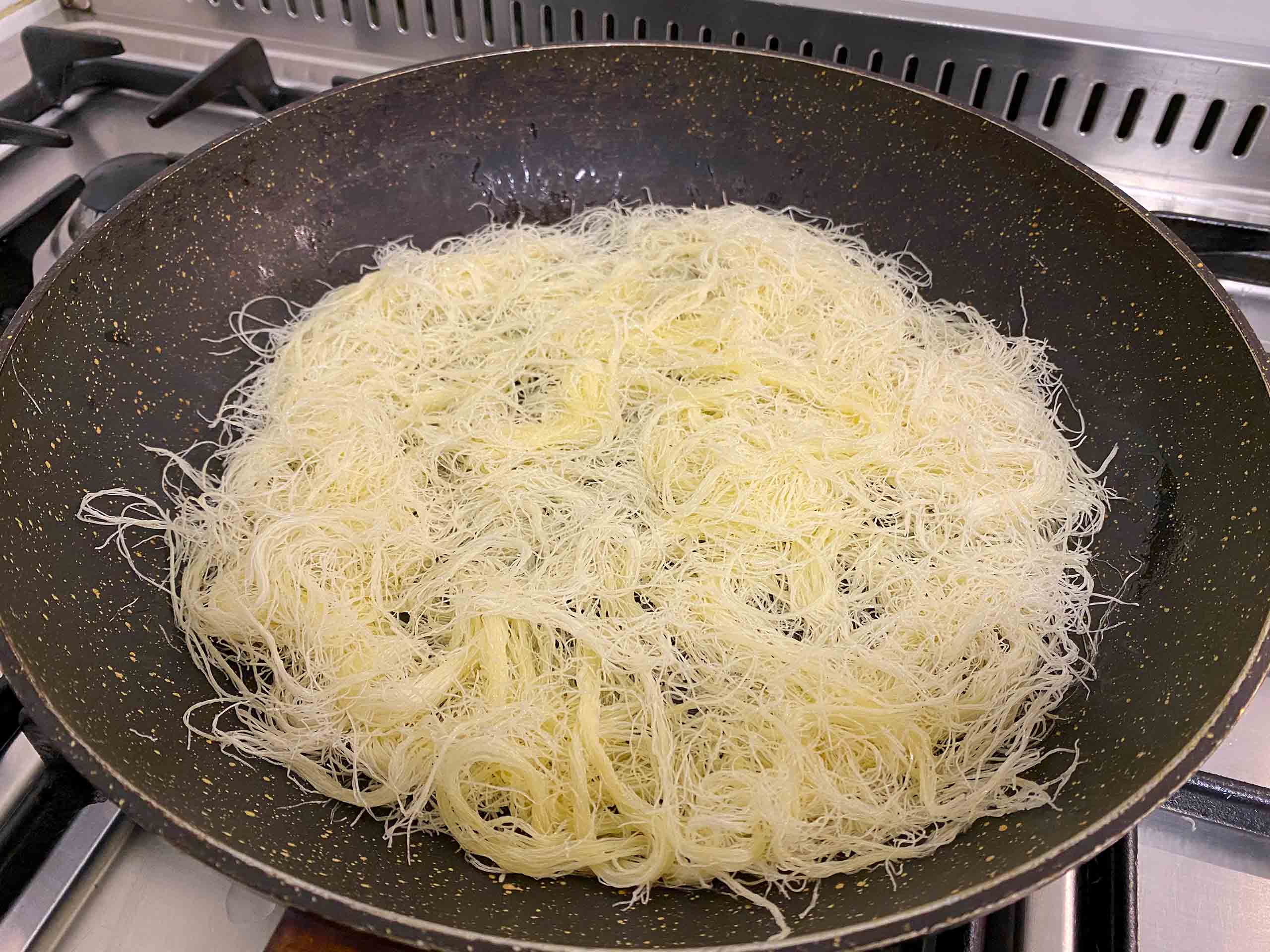
-
Cover the kadaïf with the cheese.

-
Cover with the rest of the kadaïf. Flatten with the hands so that it is leveled.

-
Turn on the heat under the pan on medium-high. Fry the kanafeh for 5 minutes. Use a spatula to check the color of the kanafeh from time to time.
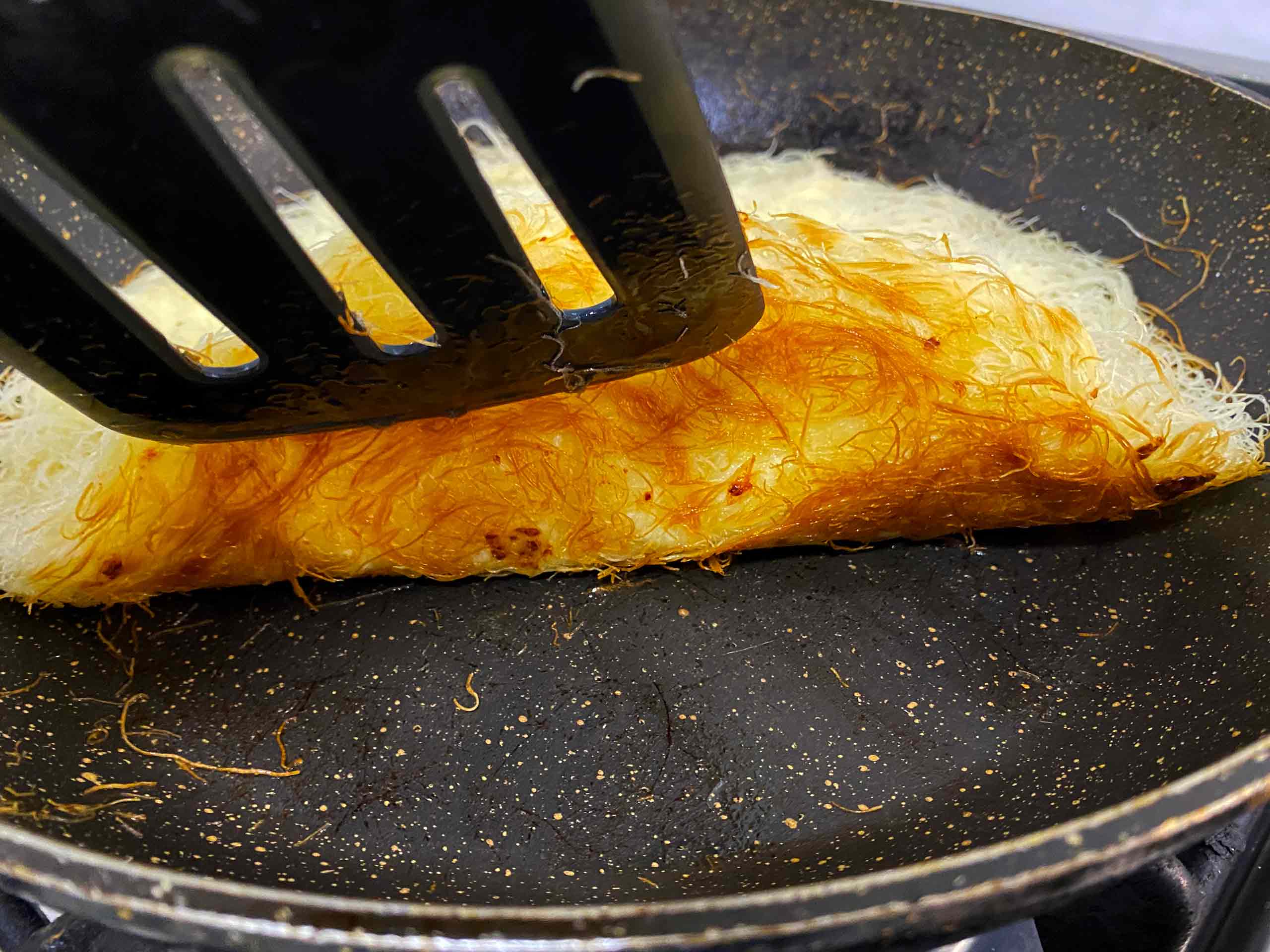
-
When the kanafeh is golden, gently slid it from the pan into a large plate or serving tray. Be careful with the hot samna.

-
Grab the plate from the bottom. It might be hot, so use a towel. Flip the pan over the kanafeh. Be careful from hot samna leftovers that might drip.
Press the plate firmly against the pan and use a quick movement to flip them over. We have flipped the kanafeh.
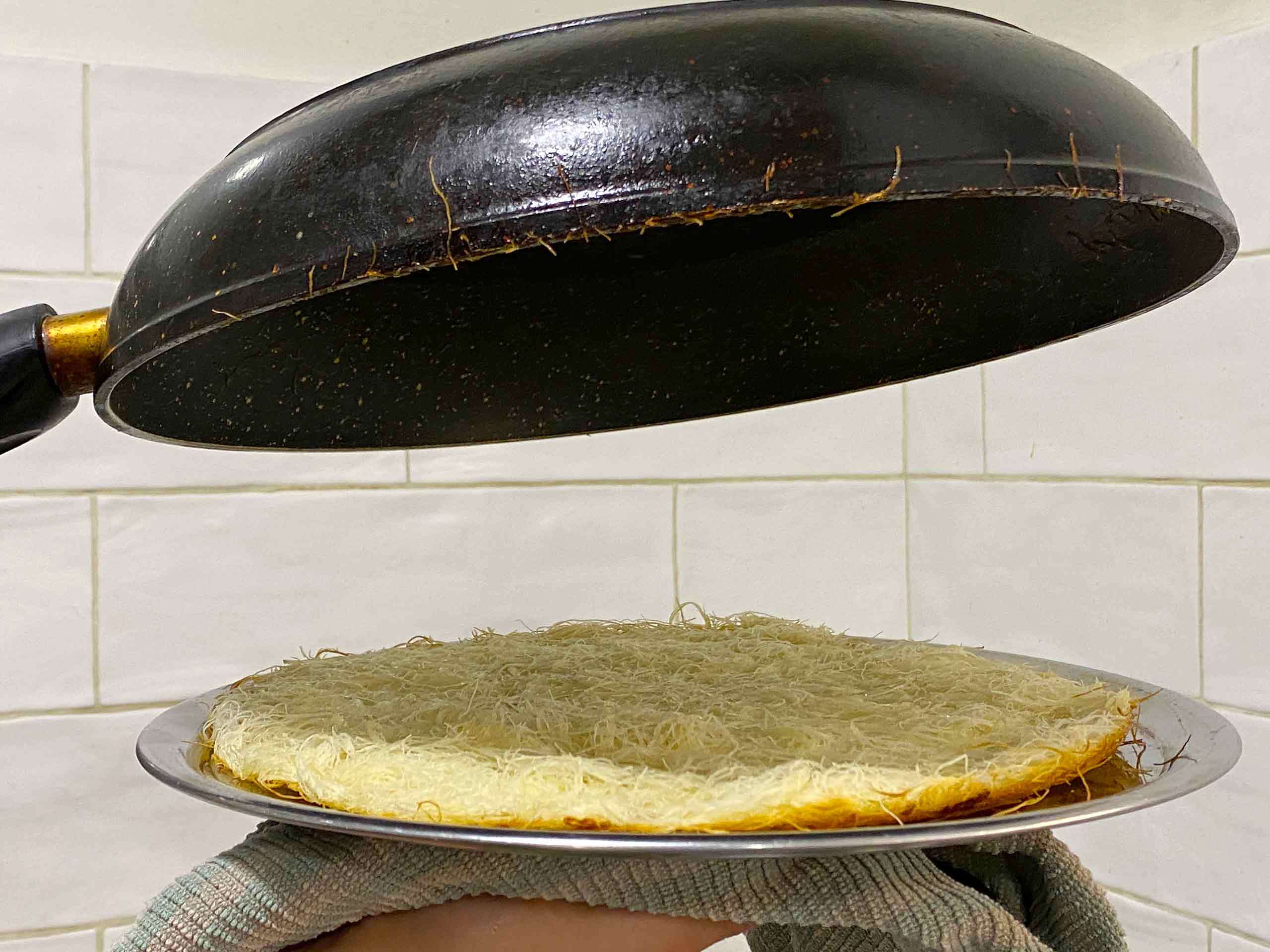
-
Return the pan to the heat. Fry the other side of the kanafeh for another 5 minutes. Use a spatula to check the color of the kanafeh from time to time. When the kanafeh is ready, slide it from the pan to the plate.
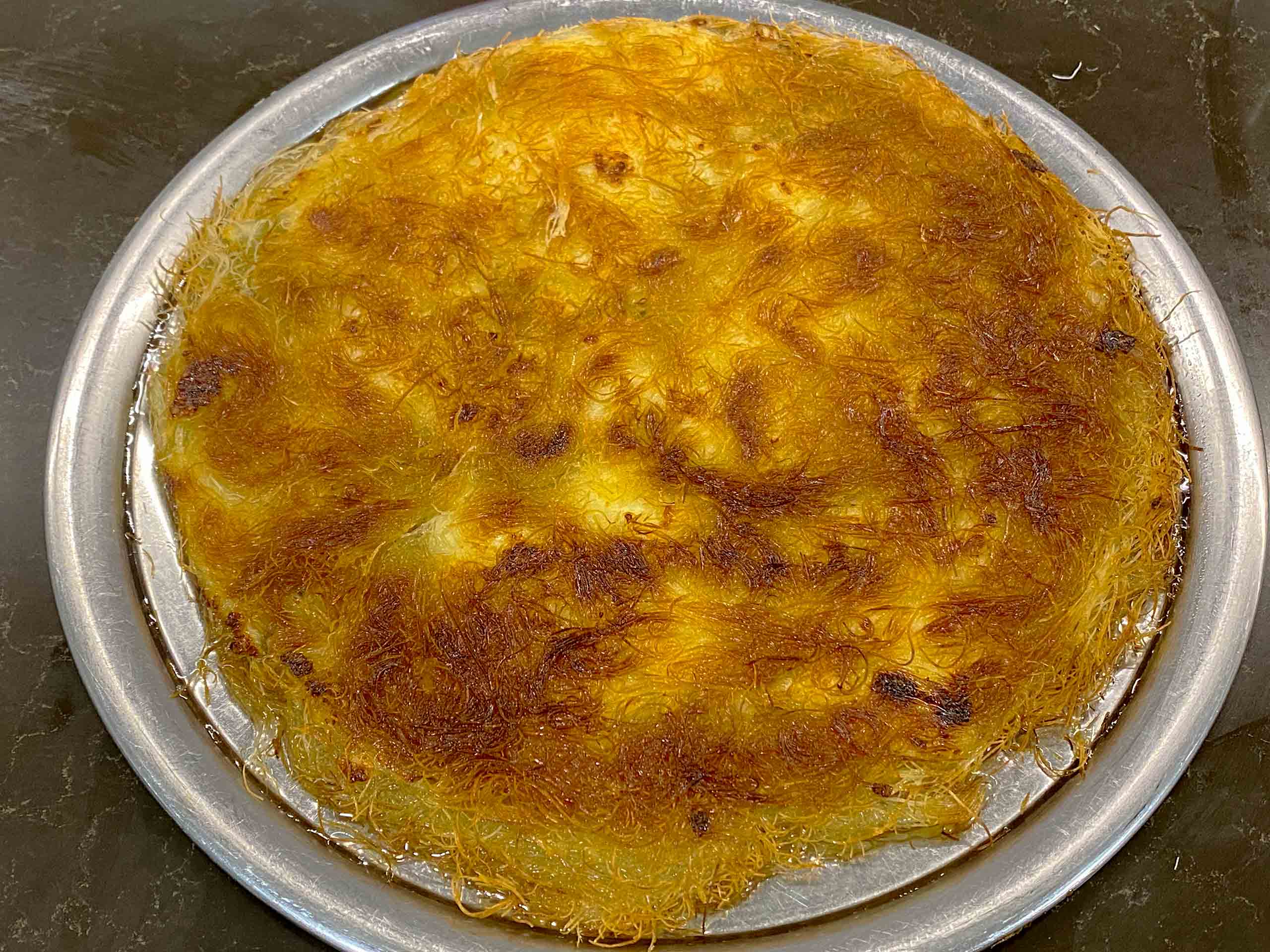
-
Drizzle the hot rose syrup generously over the kanafeh surface. Be generous but do not drown the kanafeh with the syrup.
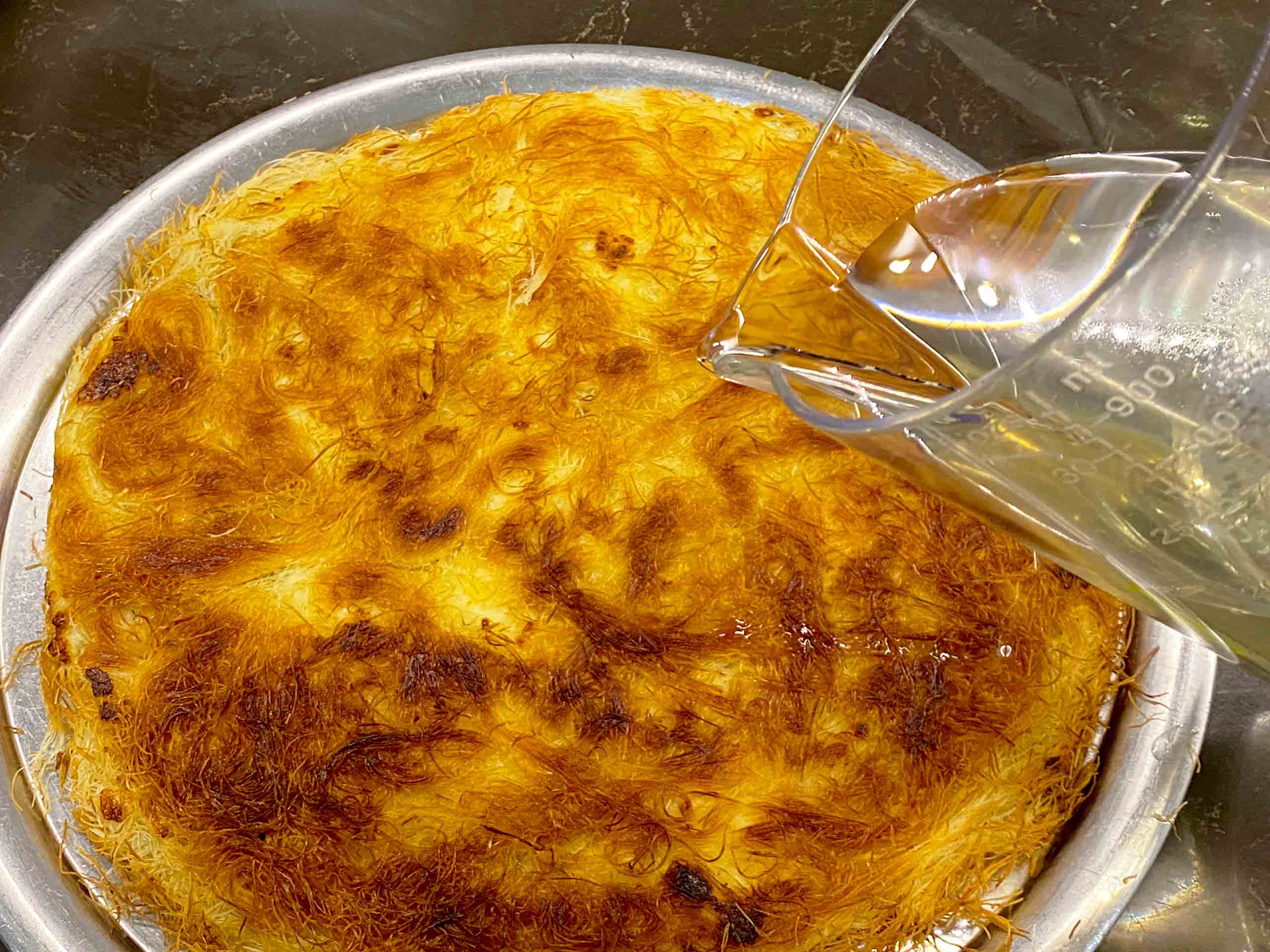
-
Sprinkle the kanafeh with chopped pistachios and serve.


